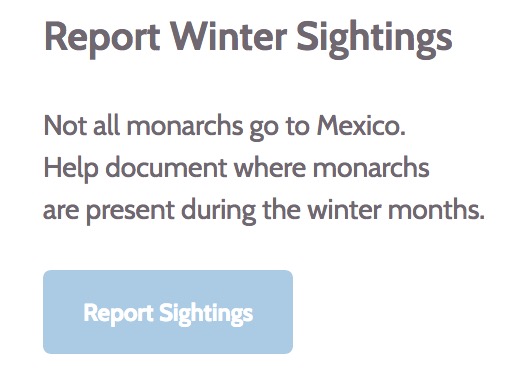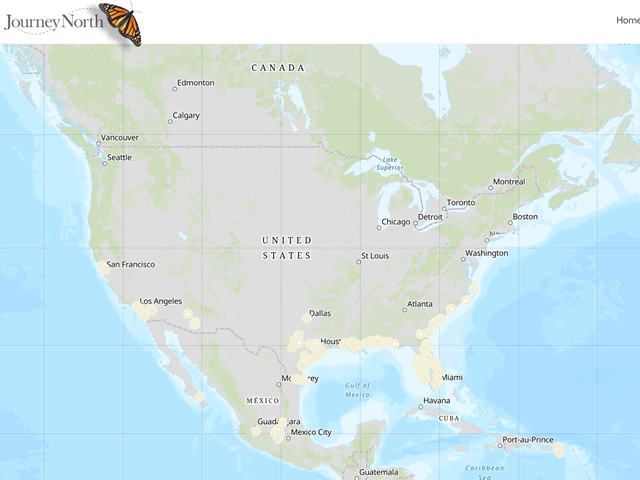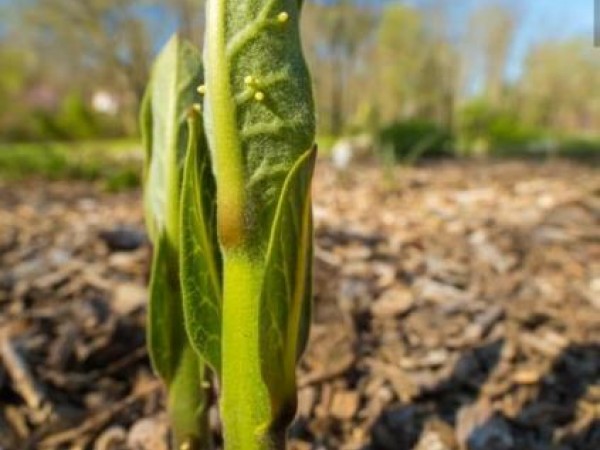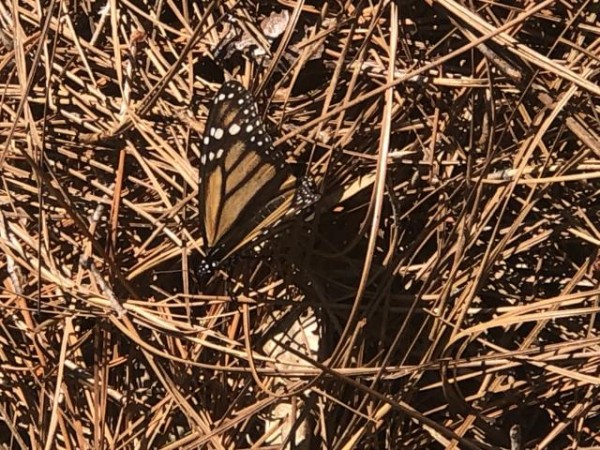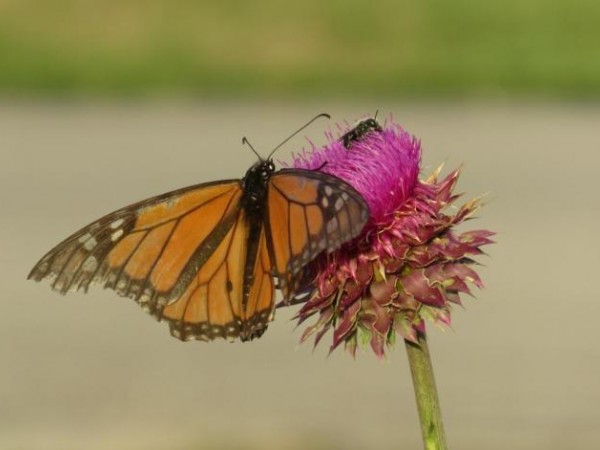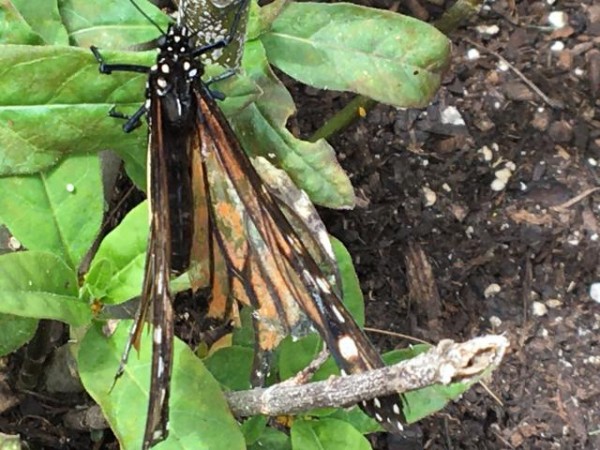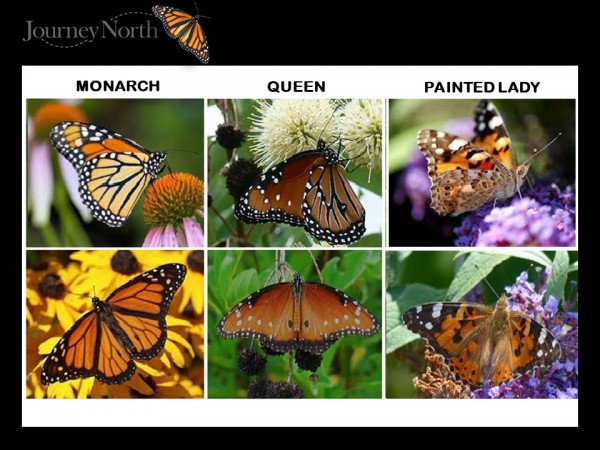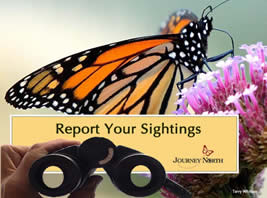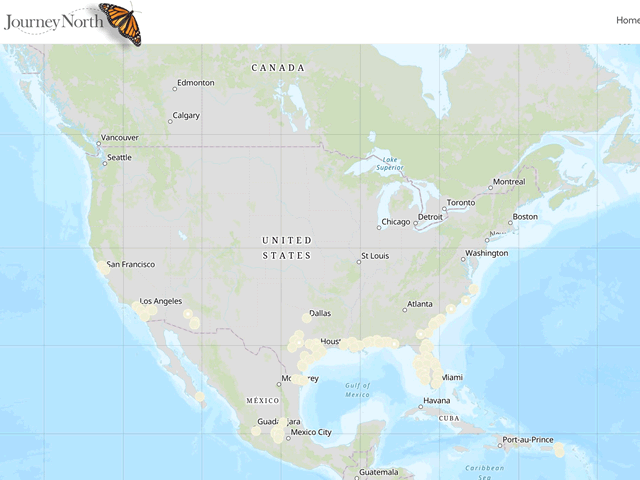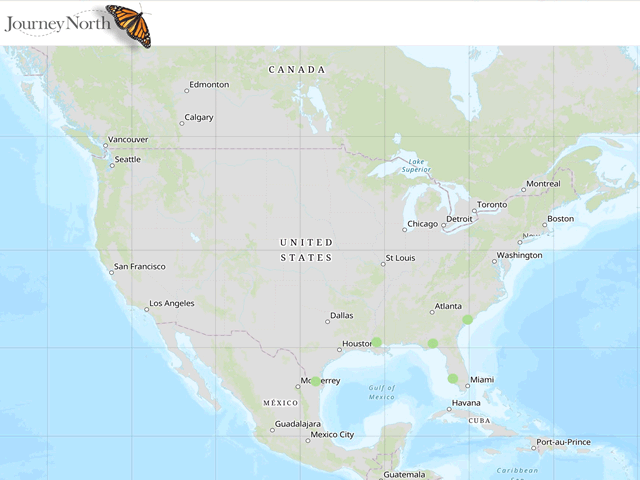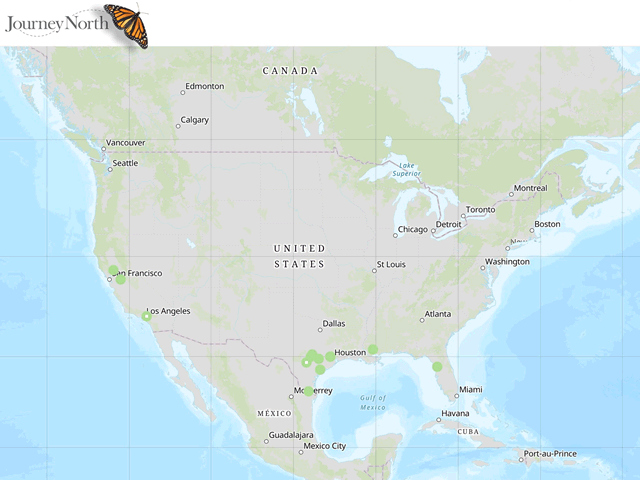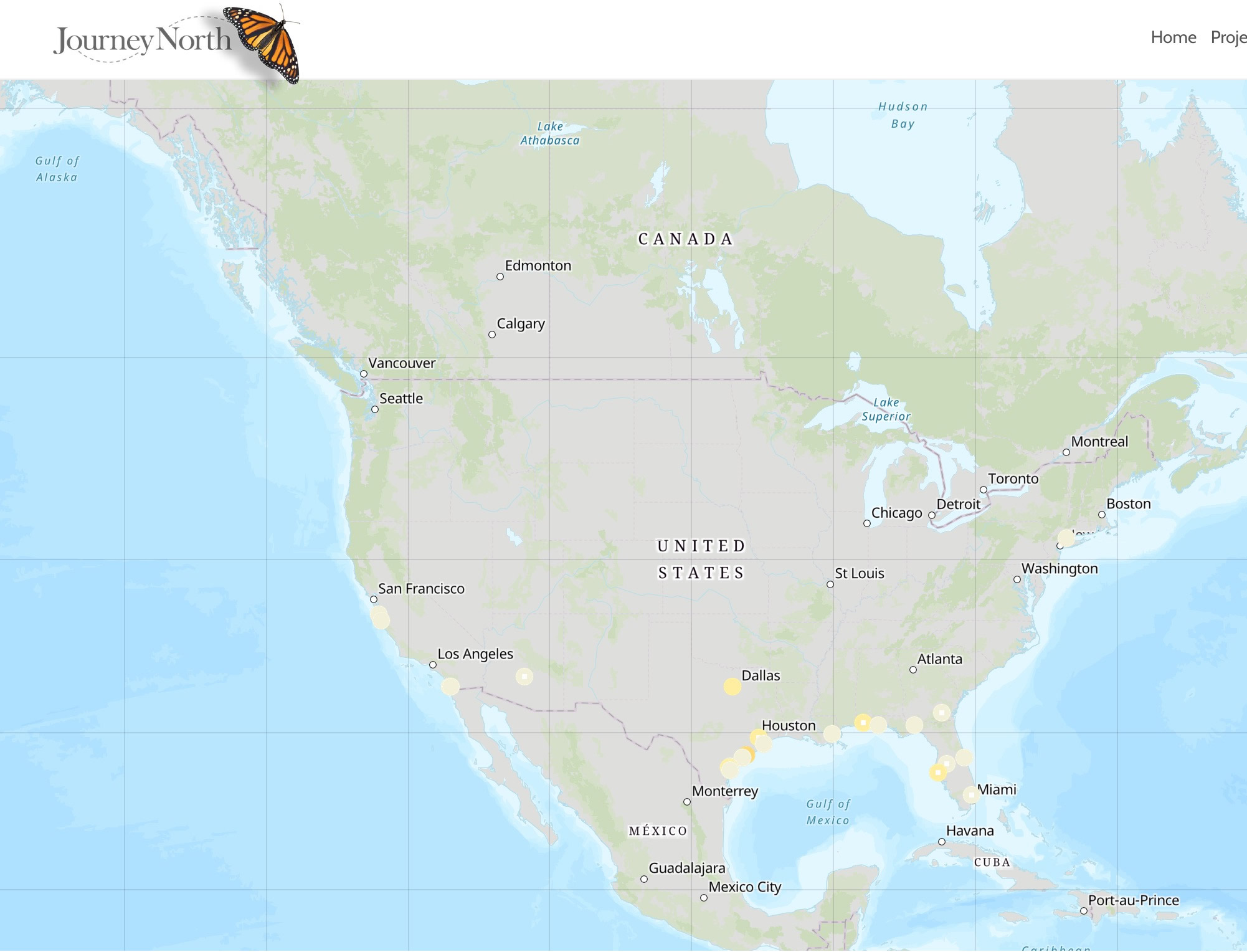Endings and Beginnings
No longer their brilliant orange, the monarchs from Mexico are nearing the end — and a new generation is about to continue the journey north.
Eastern Population of Monarchs
Monarch Migration Front Line
Cold temperatures and strong winds have stalled the northward migration of monarchs. In the mid-west, the leading edge is stalled in Kansas and Missouri (latitude 38°N) where it was last week. In the mid-Atlantic region, monarch migration did not advance north beyond the the clusters of sightings in North Carolina, Virginia and Maryland. Check out the Journey North monarch migration map to compare the migration front line from week to week. And, keep an eye on weather patterns.
Monarchs, Milkweeds, and Eggs
Monarchs are leaving a trail of eggs as they travel. The map of egg sightings shows where eggs of the next generation are being laid. While milkweed has now been observed emerging as far north as Iowa and Wisconsin in the mid-west and Vermont in New England, Journey North citizen scientist, Nancy expresses concern and call to action: “I need to go out and buy milkweed…mine are just sprouting.” (Bella Vista, AR; 04/08/2020) Link to report
From Columbia, MO: Kimberly had this question to ask, “More eggs than milkweed?!” 04/12/2020
From Bettendorf, IA: William found a few milkweed sprouts and hoped they would survive 2 inches of snow. (04/14/2020) Link to report
From Troy, MI: With much anticipation, Sara has been checking for milkweed, “every day for weeks and just saw the first shoots [Cinderella Swamp Milkweed (Asclepias incarnata)] sprouting up today!” (04/14/2020)
From Starksboro, VT: Charlotte had her “First milkweed sighting from rhizome shoots, not seeds. Fascinating how early it is from establishing plants since last year when I was living at a lower elevation (currently am at about 1,444 ft) the seedlings didn’t germinate until mid-May.” (04/09/2020) Link to report
High-quality habitat with abundant milkweed is critical for monarchs at this stage of the annual cycle. Explore Monarch Watch’s Milkweed Market and Monarch Joint Venture’s Milkweed & Wildflower Vendor Map. Plan and plant your pollinator garden today.
Endings and Beginnings
The monarchs of the overwintering generation have only a few weeks left to live. The worn-winged butterflies are no longer their brilliant orange. Most monarchs from this overwinter generation will die by the first of May. Meanwhile, a new generation of monarchs is beginning to emerge. On fresh wings, these butterflies will complete the spring migration. At this time of the migration season, especially in Texas, Journey North citizen scientists are observing monarchs with faded wings as well as monarchs with fresh-winged monarchs.
From Gardendale, AL: Patricia “saw a Monarch who had laid eggs on my Asclepias tuberosa and was so exhausted she just laid there on the straw. I think it was her end of life. So happy to have seen Monarchs this spring, which is a rarety here in Alabama at my end of the state anyway.” (04/14/2020)
From Missouri City, TX: Marie submitted her report for a newly emerged monarch observed from her patio. (04/12/2020) Link to report
From Driftwood, TX: Chuck wrote, “This is a special time of the year. In this part of the Monarch season, we are beginning to see the first few 1st Generation Monarchs begin to flutter around our area. We saw 2 today. But yet there are re-migrants from Mexico still present and so amazing to watch. This was one of those incredible travelers.” (04/15/2020)
From Rosenberg, TX: Deborah found a “badly tattered and wings almost translucent she is so faded. Laying eggs.” 04/11/2020
Western Monarch Population Migration News
Gail Morris provides an update on the Western Monarch Population in her weekly report. Keep informed in Report #7, Wild Weather!
Wild Weather!
Monarchs love warm, sunny days and this Spring has had more favorable weather than not in the West. But last week was a roller coaster of blustery winds, heavy rains, flooding and even snow in some parts of California and the Southwest where monarchs likely are this time of year. Many mountain ranges in California had snow several feet deep and even those in the southern region were dusted in white. Monarchs journey through mountain passes on their spring migration to the summer breeding grounds so we’ll all be looking for sightings on the eastern mountain slopes next month to see how they fare. Read more
Looking For Fun Activities To Do At Home?
Look no further! Journey North has many resources for anyone with a curious mind. This week we again feature the amazing connections between Monarchs and Milkweed.
Monarchs & Milkweed Spring / Summer Maps
After FIRST sightings, please report:
- Monarch Adult Sighted
- Milkweed Sighted
- Monarch Egg Sighted
- Monarch Larva Sighted
- Monarch (OTHER observations) *including behaviors such as mating and nectaring


